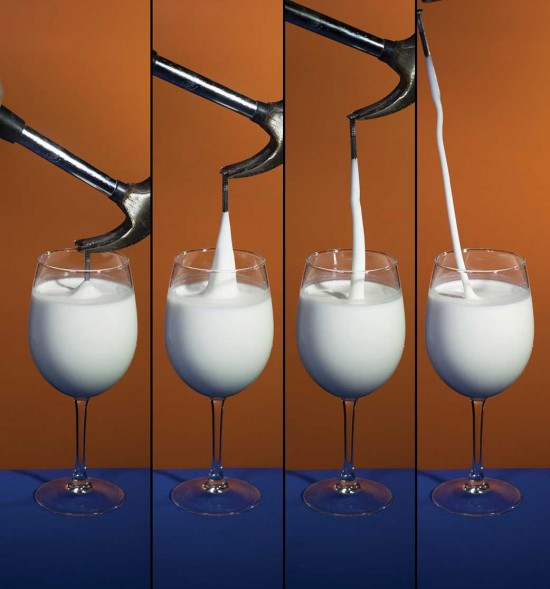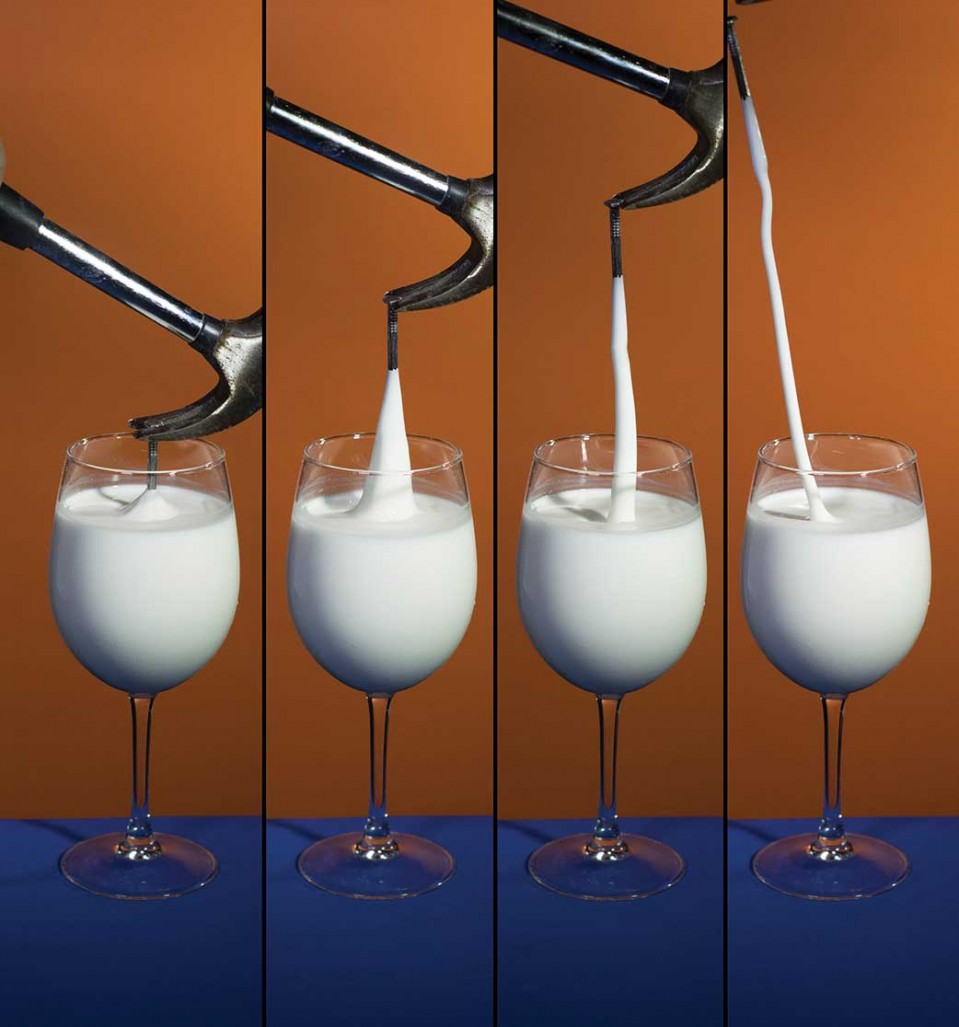Weird science
Engineers have developed a model that can predict oobleck’s wacky behavior.



It’s a phenomenon many preschoolers know well: when you mix cornstarch and water, weird things happen. Swish it gently in a bowl, and the mixture sloshes around like a liquid. Squeeze it, and it starts to feel like paste. Roll it between your hands, and it solidifies into a rubbery ball. Try to hold that ball, and it will dribble away as a liquid.
Most of us know this stuff as “oobleck,” after a sticky green goo imagined by Dr. Seuss. Scientists, on the other hand, refer to it as a “non-Newtonian fluid”—a material that appears thicker or thinner depending on how it is manipulated. That’s because the particles are so small they can be influenced by temperature and by electric charges that build up between them.
Now MIT engineers have developed a mathematical model that accurately simulates oobleck’s behavior under various conditions. Aside from predicting what the stuff might do in the hands of toddlers, the model could be useful for developing applications such as a highway pothole filler that hardens as a car drives over it or a bulletproof vest liner that morphs into an added shield against sudden impacts.
“It’s a simple material to make—you go to the grocery store, buy cornstarch, then turn on your faucet,” says Ken Kamrin, PhD ’08, an associate professor of mechanical engineering. “But it turns out the rules that govern how this material flows are very nuanced.”
Kamrin and graduate student Aaron Baumgarten have published their results in the Proceedings of the National Academy of Sciences.